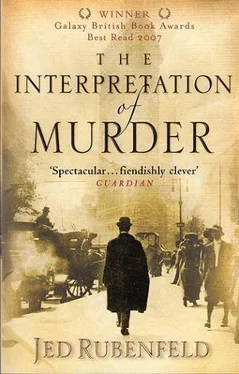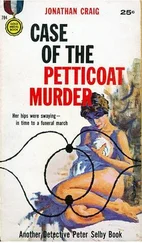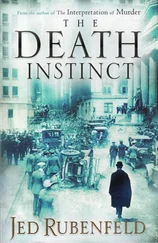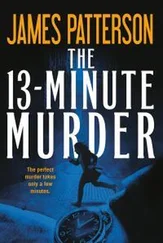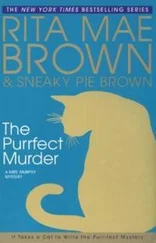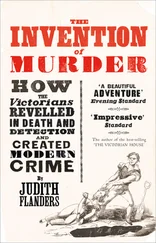Jed Rubenfeld - The Interpretation of Murder
Здесь есть возможность читать онлайн «Jed Rubenfeld - The Interpretation of Murder» весь текст электронной книги совершенно бесплатно (целиком полную версию без сокращений). В некоторых случаях можно слушать аудио, скачать через торрент в формате fb2 и присутствует краткое содержание. Жанр: Исторические приключения, на английском языке. Описание произведения, (предисловие) а так же отзывы посетителей доступны на портале библиотеки ЛибКат.
- Название:The Interpretation of Murder
- Автор:
- Жанр:
- Год:неизвестен
- ISBN:нет данных
- Рейтинг книги:5 / 5. Голосов: 1
-
Избранное:Добавить в избранное
- Отзывы:
-
Ваша оценка:
- 100
- 1
- 2
- 3
- 4
- 5
The Interpretation of Murder: краткое содержание, описание и аннотация
Предлагаем к чтению аннотацию, описание, краткое содержание или предисловие (зависит от того, что написал сам автор книги «The Interpretation of Murder»). Если вы не нашли необходимую информацию о книге — напишите в комментариях, мы постараемся отыскать её.
The Interpretation of Murder — читать онлайн бесплатно полную книгу (весь текст) целиком
Ниже представлен текст книги, разбитый по страницам. Система сохранения места последней прочитанной страницы, позволяет с удобством читать онлайн бесплатно книгу «The Interpretation of Murder», без необходимости каждый раз заново искать на чём Вы остановились. Поставьте закладку, и сможете в любой момент перейти на страницу, на которой закончили чтение.
Интервал:
Закладка:
The Manhattan Bridge, nearing completion in the summer of 1909, was the last of the three great suspension bridges built across the East River to connect the island of Manhattan with what had been, until 1898, the City of Brooklyn. These bridges — the Brooklyn, the Williamsburg, the Manhattan — were, when constructed, the longest single spans in existence, extolled by Scientific American as the greatest engineering feats the world had ever known. Together with the invention of spun-steel cable, one particular technological innovation made them possible: the ingenious conceit of the pneumatic caisson.
The problem to which the caisson responded was this. The massive support towers for these bridges, necessary to hold up their suspension cables, had to rest on foundations built underwater, almost a hundred feet beneath the surface. These foundations could not be laid directly on the soft riverbed. Instead, layer upon layer of sand, silt, shale, clay, and boulder had to be dredged, broken, and sometimes dynamited until one reached bedrock. To perform such excavation underwater was universally regarded as impossible — until the idea of the pneumatic caisson was hit upon.
The caisson was basically an enormous wooden box. The Manhattan Bridge caisson, on the New York City side, had an area of seventeen thousand square feet. Its walls were made from countless planks of yellow pine lumber, bolted together to a thickness of over twenty feet and caulked with a million barrels of oakum, hot pitch, and varnish. The lower three feet of the caisson were reinforced with boiler plate, inside and out. The weight of the whole: over sixty million pounds.
A caisson had a ceiling but no man-made floor. Its floor was the riverbed itself. In essence, the pneumatic caisson was the largest diving bell ever built.
In 1907, the Manhattan Bridge caisson was sunk to the river bottom, water filling its internal compartments. On land, enormous steam engines were fired up, which, running day and night, pumped air through iron pipes down into the great box. The forced air, building up to enormous pressure, drove out all the water through boreholes drilled in the caisson's walls. An elevator shaft connected the caisson to a pier. Men would take this elevator down into the caisson, where they could breathe the pumped, compressed air.
There they had direct access to the riverbed and hence were able to perform the underwater construction work previously considered impossible: hammering the rock, shoveling the mud, dynamiting the boulders, laying the concrete. Debris was discharged through ingeniously devised compartments called windows, although one could not see through them. Three hundred men could work in the caisson at one time.
An invisible danger lay in wait for them there. The men who emerged from a day's work in the very first pneumatic caisson — employed for the Brooklyn Bridge — frequently began to feel a strange light-headedness. This was followed by a stiffening of their joints, then by a paralysis of the elbows and knees, then by an unendurable pain throughout the entire body. Doctors called the mysterious condition caisson disease. Workmen called it 'the bends,' because of the contorted posture into which its sufferers were driven. Thousands of workers had their health ruined by it, hundreds endured paralysis, and many died before it was discovered that slowing the climb back to the surface — forcing the men to spend time at intermediate stages as they ascended the shaft — prevented the disorder.
By 1909, the science of decompression had advanced impressively. Tables had been drawn up prescribing exactly how long a man needed to decompress, which depended on how much time he had spent down in the caisson. From these tables, the man preparing to enter the caisson just after midnight on August 31, 1909, knew he could spend fifteen minutes down below without requiring any decompression at all. He had no fear of the underwater descent.
He had made the trip many times. This trip, however, would be different in one respect. He would be alone.
He had driven one of his automobiles almost down to the river itself, navigating around machinery, lumber, tilting corrugated-tin shacks, fifty-foot rounds of steel cable, and piles of broken stone. The construction site was deserted, the night watchman had completed his final rounds, and the first crews of workmen would not arrive until dawn. The tower of the bridge, virtually finished, cast a shadow over his car in the moonlight, making him all but invisible from the street. The steam engines were still roaring, pumping air down to the caisson a hundred feet below and masking all other sound.
From the back of his car, he removed a large black trunk, which he carried onto the pier to the mouth of the caisson shaft. Another man would not have been able to manage the feat, but this man was strong, tall, and athletic. He knew how to hoist a heavy trunk over his back. It made an incongruous sight, since the man was wearing black tie and tails.
He unlocked the elevator and entered it, dragging the trunk in with him. Two jets of blue flame provided light. As the elevator made its journey downward, the roar of the steam engines became a distant throbbing. The darkness became cooler. There was a deep, dank smell of earth and salt. The man felt the pressure building in his inner ear. He negotiated the air lock without difficulty, opened the caisson hatch, forced the trunk down a ramp — it echoed monstrously as it fell — and descended to the wooden planks below.
Blue-flame gaslights also illuminated the caisson. They burned pure oxygen, providing enough light to work by while emitting neither smoke nor odor. In their unsteady glow, catlike shadows shifted on the ground and in the rafters. The man looked at his watch, went directly to one of the so-called windows, opened its inner hatch, and with a grunt pushed the trunk inside it. Resealing the window, he operated two pull chains hanging from the wall. The first opened the window's outer hatch. The second caused the window's compartment to rotate, dumping its contents — in this case, one heavy black trunk — into the river. With a different set of chains, he closed the outer hatch and activated an air pipe that flushed the river water from the compartment, making the window ready for the next user.
He was done. He looked at his watch: only five minutes had elapsed since he entered the caisson. Then he heard a piece of wood creaking.
Among the various sounds one can hear indoors in the nighttime, some are instantly recognizable. There is, for example, the unmistakable pattering of a small animal. There is the banging of a door in the wind. Then there is the sound of an adult human being shifting his weight or taking a step on a wooden floor: this was the sound the man had just heard.
He spun around and called out, 'Who's there?'
'It's only me, sir,' answered a voice, sounding falsely distant in the compressed air.
'Who is me?' said the man in black tie and tails.
'Malley, sir.' Out from the shadows where two joists intersected stepped a redheaded man, short but with the girth of a bear, muddy, unkempt, and smiling.
'Seamus Malley?'
'The one and only,' answered Malley. 'You won't fire me, will you, sir?'
'What the devil are you doing down here?' replied the taller man. 'Who else is with you?'
'Not a soul. It's just they have me working twelve hours of a Tuesday, sir, and then the morning shift on Wednesday.'
'You're spending the night here?'
'What's the point of going up at all, I ask, when by the time you're up it's only time to come down again?' Malley was a favorite among the workmen, known for his fine tenor, which he liked to exercise in the echoing chambers of the caisson, and his seemingly unlimited capacity to consume alcoholic potables of any kind. The latter talent had caused him trouble around the Malley household the day before yesterday, which, being a Sunday, was a time when no alcohol ought to have been consumed at all. His incensed wife told him not to show his face until he could show it sober the next Sunday. It was this injunction that, in truth, had obliged Malley to make his bed in the caisson. 'So I say to myself, Malley, just kip down here for the night, why don't you, and none the worse or the wiser.'
Читать дальшеИнтервал:
Закладка:
Похожие книги на «The Interpretation of Murder»
Представляем Вашему вниманию похожие книги на «The Interpretation of Murder» списком для выбора. Мы отобрали схожую по названию и смыслу литературу в надежде предоставить читателям больше вариантов отыскать новые, интересные, ещё непрочитанные произведения.
Обсуждение, отзывы о книге «The Interpretation of Murder» и просто собственные мнения читателей. Оставьте ваши комментарии, напишите, что Вы думаете о произведении, его смысле или главных героях. Укажите что конкретно понравилось, а что нет, и почему Вы так считаете.
